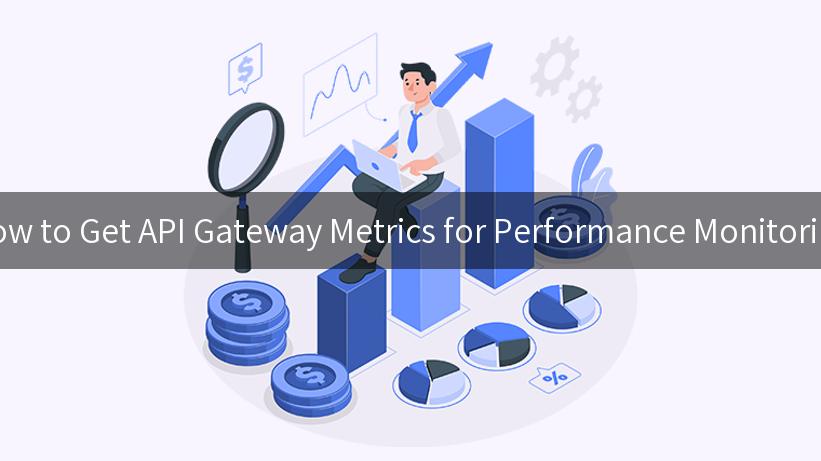
In today’s fast-paced digital world, monitoring the performance of API gateways has become a critical aspect of maintaining the health of applications. APIs serve as the building blocks of modern software architecture, facilitating communication between different systems and applications. By utilizing tools like APIPark and APIsix, developers can efficiently manage and monitor their APIs through a robust API Developer Portal. In this article, we will explore various methods to get API gateway metrics for performance monitoring, and delve into the significance of data format transformation in enhancing API functionalities.
Understanding API Gateway Metrics
API gateways play a pivotal role in managing traffic and ensuring the quality of services. They not only route requests but also provide valuable metrics that can help improve performance. Key metrics to monitor include:
- Response Time: The time taken to process a request and return a response.
- Throughput: The number of requests processed over a given time period.
- Error Rates: The percentage of failed requests relative to total requests.
- Latency: The delay between sending a request and receiving a response.
Monitoring these metrics allows developers to identify bottlenecks, predict traffic spikes, and ensure a smooth user experience.
Setting Up APIPark for Metrics Monitoring
Step 1: Quick Deployment of APIPark
Deploying APIPark can be accomplished in just a few simple steps. Here’s how you can quickly set up APIPark on your system:
curl -sSO https://download.apipark.com/install/quick-start.sh; bash quick-start.sh
Once APIPark is up and running, you can start leveraging its features for API management and performance monitoring.
Step 2: Configuring APIsix for Metrics Collection
APIsix is a high-performance, open-source API gateway that integrates seamlessly with APIPark. To get started with APIsix, ensure that you have it properly set up and running.
Sample Configuration for APIsix
Here is a basic YAML configuration file for APIsix that sets up the necessary plugins for monitoring metrics:
apisix:
plugins:
- name: "prometheus"
enable: true
- name: "http-logger"
enable: true
This configuration enables the Prometheus plugin for gathering metrics and the HTTP logger for tracking requests and responses.
Step 3: Integrating With the API Developer Portal
To effectively monitor your API metrics, you can utilize the API Developer Portal provided by APIPark. This portal provides a user-friendly interface for managing APIs and accessing metrics dashboards.
- Login to the API Developer Portal.
- Navigate to the Analytics Section: This is where you can view various API metrics at a glance.
- Customize Your Dashboard: You can modify your dashboard to display the most relevant metrics for your team.
Importance of Data Format Transformation
When dealing with APIs, data format transformation is crucial for ensuring that the data exchanged between different systems is compatible. This can drastically improve API performance and reduce errors.
Types of Data Transformation
-
XML to JSON Conversion: APIs often exchange data in different formats. Transforming XML data to JSON can enhance compatibility with JavaScript-heavy front-end applications.
-
Encoding and Decoding: Encoding data to a specific format (like Base64) may sometimes be necessary when sending sensitive information.
| Format |
Pros |
Cons |
| XML |
Structured, supports attributes |
Verbose, less readable |
| JSON |
Lightweight, easy to read |
Limited data types |
| CSV |
Simple, easy for tabular data |
Not suitable for nested data |
Integrating data transformation into your API architecture helps streamline processes and ensure the delivery of high-quality data to clients.
Retrieve Metrics Programmatically
To effectively get API gateway metrics, you can use various methods provided by APIPark and APIsix. For instance, using curl to retrieve metrics from APIsix:
curl --location 'http://api_gateway:port/stats' \
--header 'Content-Type: application/json' \
--header 'Authorization: Bearer token'
Replace api_gateway, port, and token with the appropriate values for your configuration. This command will return performance metrics that you can utilize for further analysis.
APIPark is a high-performance AI gateway that allows you to securely access the most comprehensive LLM APIs globally on the APIPark platform, including OpenAI, Anthropic, Mistral, Llama2, Google Gemini, and more.Try APIPark now! 👇👇👇
Analyzing API Gateway Metrics
It is essential to understand how to analyze the metrics collected from your API gateway. Metrics analysis can uncover trends over time, point out potential issues, and help inform decisions regarding scaling and optimization.
Visualizing Metrics
Many organizations use visualization tools to present their API metrics in a more digestible format. Tools such as Grafana can connect to data sources like Prometheus, allowing you to create dashboards that illustrate performance metrics interactively.
Setting Alerts
Setting up alerts based on metric thresholds can notify the relevant parties about issues before they escalate. For example, if response times exceed a certain threshold, an alert could trigger a review or a rollback to a previous API version.
Implementing Best Practices for Performance Monitoring
To ensure that your API performance monitoring is effective, consider the following best practices:
- Regularly Review Metrics: Periodic monitoring helps maintain healthy API performance.
- Automate Reporting: Develop scripts that automatically generate reports on API metrics, improving transparency within the team.
- Test and Optimize: Always be testing and optimizing your APIs for peak performance.
Conclusion
Monitoring the performance of API gateways is a vital practice for maintaining robust digital services. Utilizing tools like APIPark and APIsix, developers can not only manage their APIs more effectively but also gain deep insights into their performance metrics. With the strategies discussed above, you can enhance your API monitoring capabilities, ensuring higher reliability and performance.
By following the steps outlined in this article, you will be well on your way to becoming proficient in getting API gateway metrics for performance monitoring, contributing to a more efficient and collaborative development environment.